How To Draw Fear Body Language
- What is Body Language?
- Why is Body Linguistic communication So Important?
- What Are Some Body Language Examples?
- Open Trunk Language Examples
- Closed Body Language Examples
- What Are the 11 Types of Body Language?
- Facial Expressions
- Body Proxemics
- Gestures
- Ornaments
- Interest
- Eye Gaze
- Pacifying
- Haptics
- Blocking
- Paralanguage
- Emblems
- Agreement & Interpreting body linguistic communication
- Body Language Mini FAQ
This article is part of our body linguistic communication guide. Click here for more than.
Did you know that we can only spot lies with 54% accuracy?
Did you know there are over 20 muscles in the face up that make up over 10,000 facial expressions?
Learning to decode body language is powerful and one of the nearly important nonverbal advice skills.
This guide is your key to reading people AND having confident torso language.
In this article, we're going to cover the essential must-knows to mastering your body linguistic communication skills:
- What is torso language?
- How to make yourself look outgoing and relaxed during conversations.
- 10 negative cues to avert (that you might be using regularly!).
- The 11 types of body linguistic communication you'll encounter.
Before we dive in, be sure to take our trunk language quiz here to notice out how good you are at reading body linguistic communication!

Can You Read Body Language? (Quiz)
How good are your trunk language skills? Take our costless torso linguistic communication quiz to find out!
↑ Tabular array of Contents ↑
What is Body Language?
Trunk Language Definition
Body language is the science of nonverbal signals such as gestures, facial expressions, and eye gaze that communicate a person's emotions and intentions. In total, in that location are 11 types of body language that nosotros utilise to communicate. Unlike words, trunk language is often done subconsciously and constitutes a large part of our advice.
↑ Table of Contents ↑
Why is Body Language So Of import?
What if I told you there'due south a way to get almost anything you want? Things like…
- secretly knowing what someone's thinking
- getting a heighten without working any harder
- having your date never forget you and wanting more than
People who are good at reading body linguistic communication typically excel in their careers, have groovy relationships, and get "freebies" in life.
Only if you're non good at trunk language, don't fret!
Trunk language is a skill ANYONE tin can learn.
If y'all want to learn more well-nigh the importance of body language, I recommend checking out my article here:
5 Powerful Reasons Why Trunk Language is Of import
↑ Tabular array of Contents ↑
What Are Some Body Language Examples?
Body linguistic communication tin be broken down into 2 major categories—positive or open body language, and negative or closed body language.
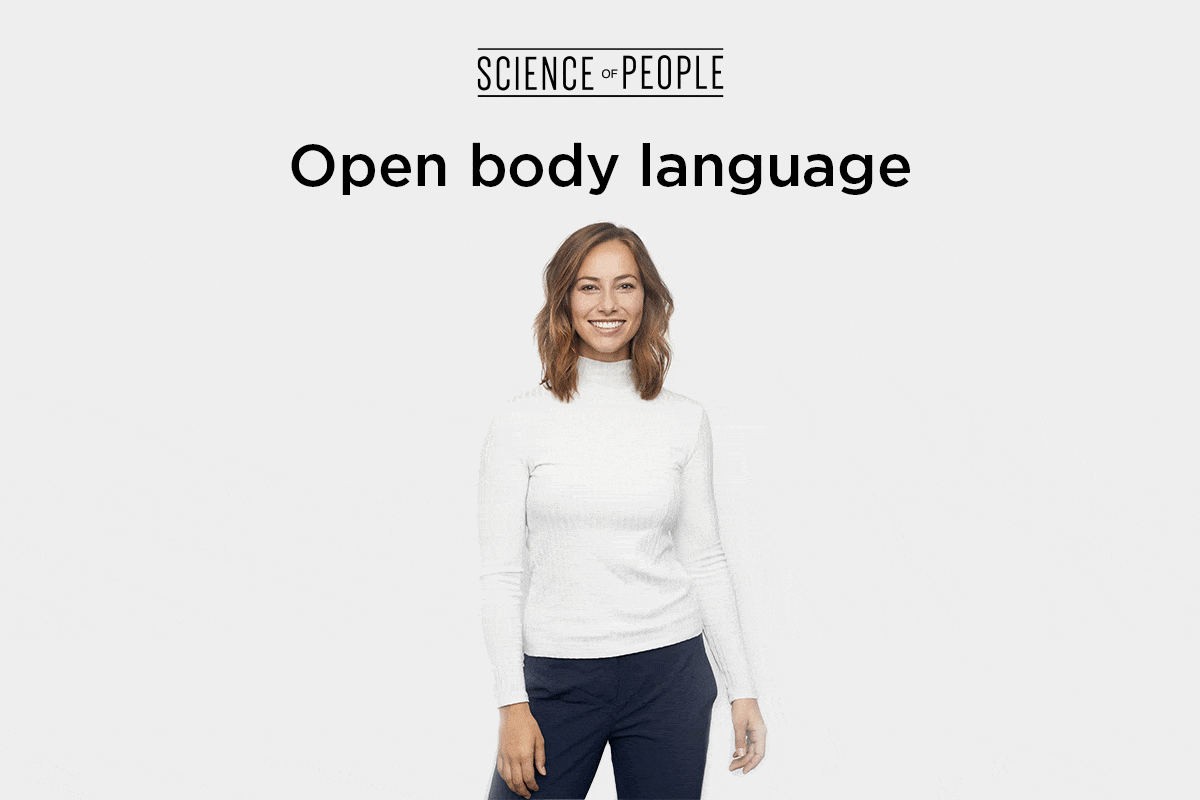
And simply like how they sound, these 2 broad categories of cues signal just how open (or closed) someone is from their external environment. Whether at a networking event talking to a random stranger you lot've just met, giving a presentation or speech, or on a first engagement, knowing how to read these cues is key to knowing how receptive others are to you lot or the situation.
Reading torso language is every bit close to heed reading as we can go.
Open Body Linguistic communication Examples

THE Eyebrow Wink
Description: When someone does an eyebrow flash, you'll typically encounter their eyebrows raise slightly for less than ⅕ of a 2d.
What it Ways: The countenance enhance is a great sign of involvement. People tend to utilise the eyebrow flash in 3 master ways:
- The eyebrow wink can evidence intersest professionally, every bit when giving approving, agreeing to something, thanking someone, or seeking confirmation. Information technology's used as a nonverbal "aye" during chat.
- The eyebrow flash can besides show interest romantically.
- Or the eyebrow flash can show interest socially, equally when 2 people recognize each other. It signals to the other person that you lot are happy to see them.
Whenever we use the eyebrow flash, we call attending to our confront. Teachers and speakers often apply it every bit a way to say, "Listen to this!" Or "Look at me!"
Interestingly, some cultures like the Japanese find this cue indecent and avoid itthree.
The Science: According to researchers at the Academy of Pittsburgh, the countenance wink is a universally recognized form of greeting and tin be found all over the earth, suggesting that this gesture is common among all cultures.
Yes, this gesture is even used by monkeys and apesane .
How to Use it: There are so many means to utilise the eyebrow flash. Hither are a few:
- To Show Liking: When you see someone you like or who you want to similar you, give them a quick eyebrow wink followed by a warm grinning.
- To Increase Engagement: If you want someone to listen to something you are near to say, enhance your eyebrows right before you deliver.
- To Testify Interest: Are you curious? Your eyebrows are the best way to show information technology!
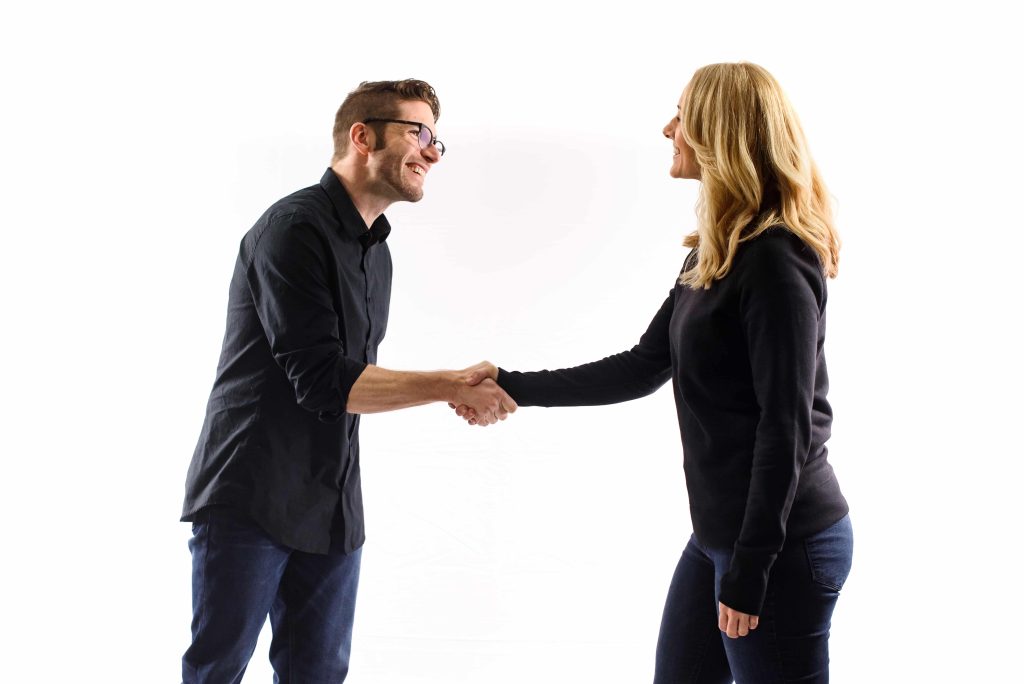
THE EQUAL HANDSHAKE
Take you ever had a cold, clammy handshake?
Or an overly dominant handshake?
Or even… a really awkward ane?
Yuck! These handshakes are NOT smashing for building mutual rapport. Enter: the equal handshake.
Clarification: An equal handshake has these seven elements:
- good eye contact
- a warm, genuine smile
- an extended arm with a slight bend at the elbow
- fingers pointing downward while approaching the other person's hand
- this one's the big 1—EQUAL pressure during the mitt clasp
- slight forward lean toward the other person
- a wearisome release after 1–2 seconds
What it Means: This handshake is a breath of fresh air and signals mutual respect for both parties.
An equal handshake signals confidence, openness, and power during an interaction and leaves both interactants feeling warm and fuzzy inside.
How to Utilise it: Before shaking hands, consider the context. Salespeople learned early on on that an uninvited or surprise handshake from nowhere was dissentious to their sales—the buyer obviously didn't welcome them, and they felt forced to shake hands.
Handshakes also aren't universal—some cultures, similar Nihon, commonly bow as a greeting, and other cultures, similar Italia or Espana, give a kiss on the cheek.
A skillful rule of pollex is to only milkshake hands when y'all know the other person will warmly reciprocate it. Otherwise, a head nod is a good option—or wait for the other person to initiate outset.
On some other important note, older people require less pressure level, and so avert crushing their manus with your house grip. When shaking hands with a college-status individual, allow them to set up the length and force per unit area of the handshake outset, and follow upward with an equal exchange for maximum bonding.
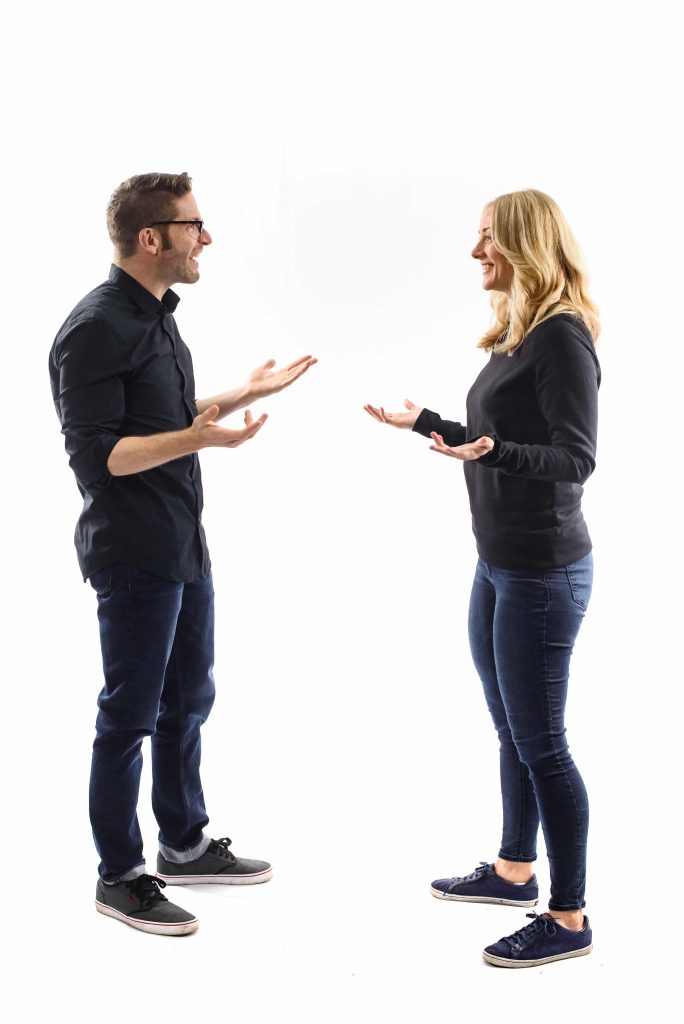
AUTHENTIC MIRRORING
Description: Displaying similar body language to other interactants during a social situation.
What it Means: Mirroring is a highly rapport-building cue that signals a want to connect with someone else. People tend to mirror just those they like, and seeing someone else mirror our own body language creates a feeling of similarity and likeness.
The Scientific discipline: Mirroring is powerful. Studies have shown that mirroring leads to:
- Greater compliance from requests. And then mirror if you want to persuade someone.
- Higher sales numbers. So be sure to mirror if you are in sales.
- Positive evaluations. So mirror your director to build rapport.
- Even larger tips from customers!
Mirroring others is literally hardwired into our brains. Professor Joseph Heinrich from the University of Michigan explains that mirroring others helps us cooperate—which leads to more food, better health, and economical growth for communities.
How to Use it: Make sure to mirror subtly. If someone nods their head vigorously in agreement, and you do the same, you may come off as too obvious—this tin can even lead to suspicion or decreased rapport.
Best friends often mirror without even realizing it!
You lot can also avoid mirroring someone entirely if you're disinterested in them or want to create boundaries.
If the other person is displaying negative body language cues, attempt displaying open positive language cues yourself to get them to open up, instead of copying their closed gestures.
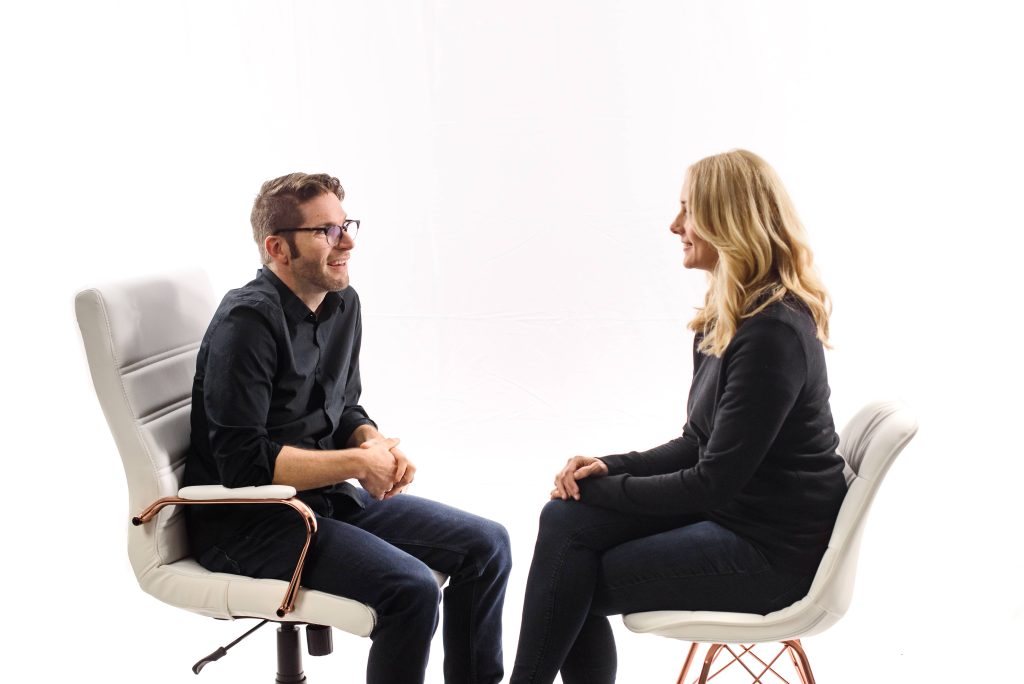
Mutual GAZING
Type: Involvement
Description: Eye contact that is mutual—neither lacking eye contact or being a little… err, as well interested.
What it Means: Longer eye contact, specially from people who are high-condition, makes the states feel favored. This is especially true when receiving eye contact from celebrities or movie stars2.
Increased middle contact also indicates the other person may be curious, as when people are more circumspect to their environment, their glimmer rate will generally subtract3.
Warning:
Practice not make 100% heart contact! That is actually a territorial point and shows aggression. People ofttimes do it before a fight:
Yous want to do mutual gazing. Eye contact when you agree, when you lot are listening, when you lot are exchanging ideas, or when staring at your amazing cocky in the mirror:
The Science: Making eye contact simply 30% of the time has been shown to significantly increment what people retrieve you say.
Y'all can also give a boost to your perceived persuasiveness, truthfulness, sincerity, and brownie just by common heart gazing3.
Interestingly, certain personality traits were found to relate to more mutual gazing—namely, extroversion, conjuration, and openness3.
How to Use it: Increase your eye gaze to bail. However, make sure to glance abroad occasionally, since too much eye contact can exist seen as threatening and brand people feel uncomfortable.
Pop Quiz: Real vs. Fake
Accept a look at the photo beneath. Can you tell if this is a real or false grin?

Click to Reveal Answer
This is a faux grinning. This smile lacks the characteristic "crow's anxiety" wrinkles around the corners of the eyes.

DUCHENNE SMILE
Description: The Duchenne grin is a smile characterized by the "crow's feet" wrinkles effectually the corners of the optics along with upturned corners of the mouth. This is a real smiling.
What information technology Means: When you meet a Duchenne smile, this likely indicates genuine happiness.
It is hard, simply not incommunicable, to imitation a real smile. In well-nigh cases, we smile dozens of times in normal chat, merely many of these smiles are given out of politeness or formality.
The Scientific discipline: Inquiry shows that babies several weeks old volition already utilize the Duchenne smiling for their mothers but, while using a more polite, social smile for others2.
People as well tend to grin more than with others than when alone—in fact, when we see a smile face, endorphins are released into our organisationone.
Studies show that athletes will smile noticeably differently, whether they terminate in first, 2d, or third identify. This distinction was the aforementioned even in congenitally blind athletes who never even saw a smile earlier1.
How to Use it: When smiling, remember to "smile with your eyes," instead of merely your oral cavity. It also helps to smiling widely enough to bring the cheeks up, helping activate the muscles around your optics. Remember to maintain the smile even after an encounter—in faux happiness encounters, yous may often run into an "on-off" smile that flashes and and then vanishes rapidly afterward 2 people go their split up ways4.
Example: In this example, George Due west. Bush flashes a childish Duchenne grinning ("Oops, I got caught!") when he tries to open up a door, but fails:

THE HEAD TILT
Description: The head tilts to one side, exposing the cervix.
What it Means: A head tilt is a sign of openness. Your neck is one of your most vulnerable areas. Neck skin is much thinner and requires protection. And exposing your neck and pharynx opens you upwards.
When someone tilts their head, they are showing that they're comfortable enough to let their neck exist exposed. You tin often see the head tilt (especially from women) when others are attracted to someone, although this tin can also exist used to indicate platonic interest.
Information technology tin likewise show that someone is curious about what you're saying, particularly if you get the head tilt and caput nod cluster:
The Science: Studies of paintings from the last 2,000 years show that women are depicted iii times as often as men using the caput tilt1. Today, you lot can also see women tilting their heads 3 times more than than men in modern advertising:

How to Use it: Since this is a very powerful disarming behavior, you lot can tilt the caput to the side, forth with other open body linguistic communication cues, to ease a tense situation or go someone to open up.
The head tilt is a very warm cue—it softens y'all. You lot want to be careful not to use it likewise much during sales pitches or meetings.
Example: In The Bachelor, you can frequently see the head tilt during romantic encounters. Sentinel this scene every bit Cassie tilts her head during their offset appointment earlier she sleeps with Colton (timestamp 2:46):
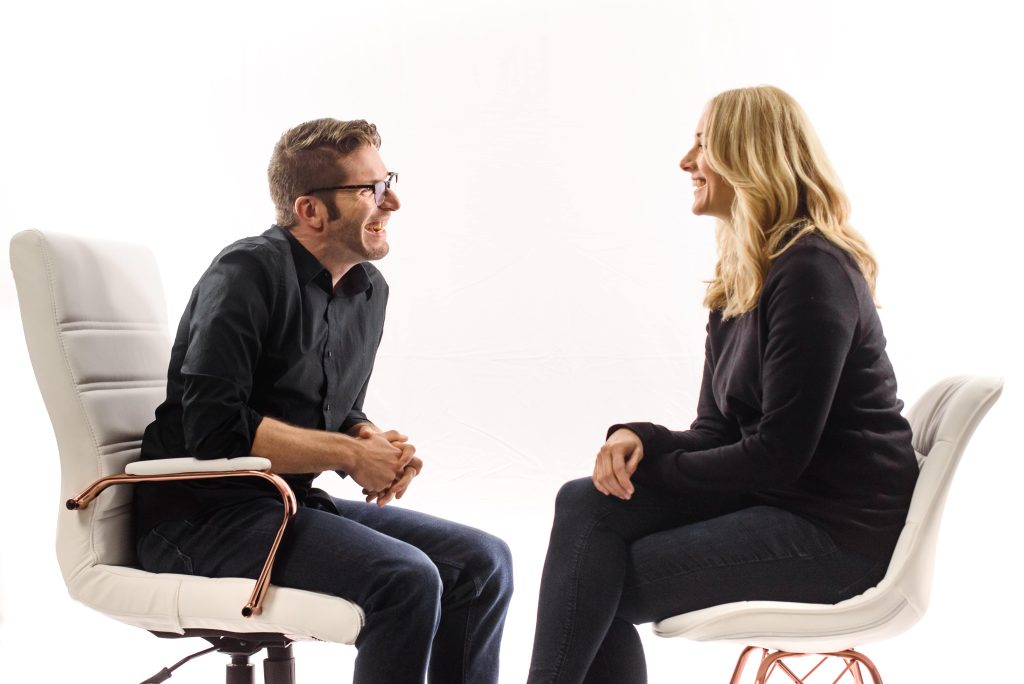
SHARED LAUGHTER
Description: Simultaneous laughter shared betwixt individuals in response to a joke or funny observation.
What it Means: When you lot cleft a joke and the other person shares a express mirth with yous, this is a adept sign that they are open to connecting with you. Laughter is meant to institute potential relationships or maintain existing ones, especially if the joke wasn't especially funny.
Laughter is too an indication that someone is relaxed, since stiff and nervous people unremarkably practise not laugh genuinely, or instead give a tense express mirth if they are in a nervous situation.
The Science: Neurologist Henri Rubenstein institute that simply ane minute of laughter provides up to 45 minutes of subsequent relaxation1! The relaxation heave yous become certainly justifies watching your favorite comedians on Telly. And you know who'southward great at laughing? Volition Smith. In this funny "insult" episode of Will Smith vs. Margot Robbie, Will'due south laughter is so contagious that his laughter even makes others express joy!
Equally we age, we usually laugh less. Adults laugh an average of but 15 times per day, while preschoolers express joy 400 times daily1.
A groovy style to boost your laughter is to become more social! Robert Provine found that laughter is more than 30x more likely to occur in social situations rather than when alone. In his study, participants were videotaped watching a funny video clip in 3 different situations:
- lonely,
- with a same-sex stranger, and
- with a aforementioned-sex friend.
Those who watched alone had significantly less laughter than when watching with a stranger or friend.
How to Use it: Effort incorporating humor into your conversations, such as giving the opposite answer to a yes/no question.
Instance: If people are expecting you to say yeah, say no; if people are expecting you to say no, say yes instead. Information technology's uncomplicated but constructive.
This is Jennifer Lawrence's go-to strategy.
The Earth's Funniest Joke
In 2001, Richard Wiseman set out to find the world'due south funniest joke. In his experiment, Wiseman prepare a website named LaughLab, in which users could input their favorite joke, and participants could rate them.
By the finish of the project, which garnered 40,000 jokes and had over 350,000 participants from 70 countries, one joke was found to stand out above the rest:
Two hunters are out in the woods when one of them collapses. He doesn't seem to be breathing, and his optics are glazed. The other guy whips out his phone and calls the emergency services. He gasps, "My friend is expressionless! What can I practice?" The operator says, "At-home downward. I can assistance. First, let'southward make sure he's dead." There is a silence, then a shot is heard. Dorsum on the phone, the guy says, "OK, now what?"

Open up PALMS
Type: Gesture
Description: When using hand gestures, make sure you display your palms and don't hibernate them from others. Pockets, easily behind back, and closed fists can all act as barriers against open palms.
What it Means: People who brandish open palms are seen as honest and sincere:
And take you ever been in a situation where you lot met someone, and they seem nice, simply something inside you lot felt a bit… off? Information technology might take been that their palms weren't showing.
Evolutionarily, when we see closed palms, our brains receive signals that nosotros might be in danger—after all, they could be brandishing a weapon or hiding something even more dangerous…
How to Use it: When gesturing with your hands, make sure your hands are open nearly of the time and people can run into your open palms. Information technology is also a good idea to keep the palms facing upward most of the time, rather than downward.
↑ Table of Contents ↑
Airtight Body Linguistic communication Examples
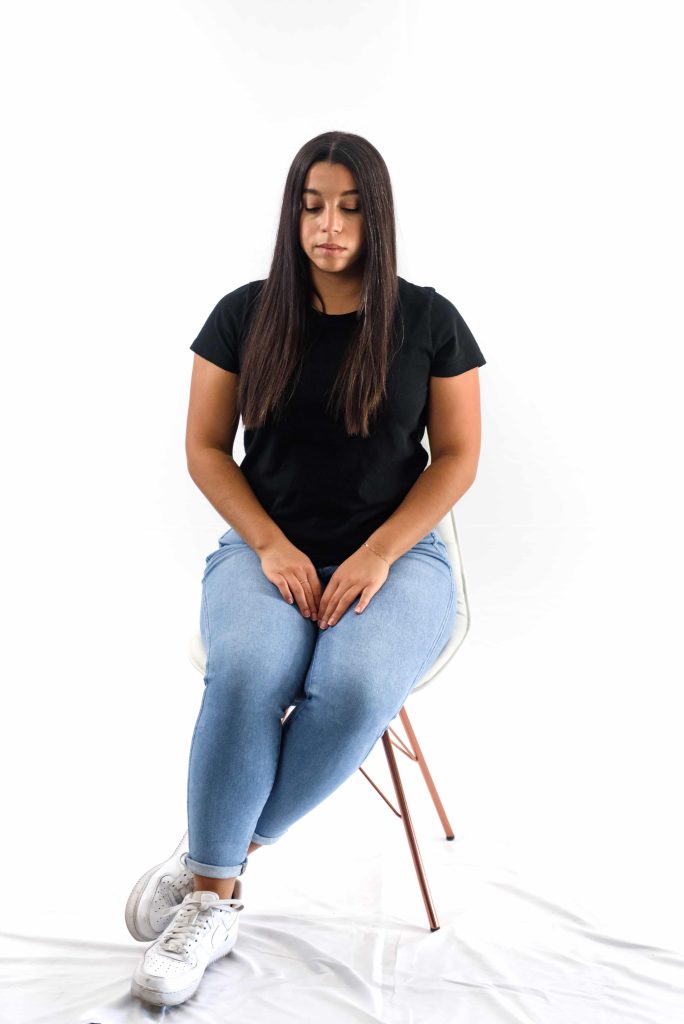
CROSSED ANKLES
Description: The feet are crossed, and ane talocrural joint lies on top of the other. This tin be done whether sitting or standing—or even with the anxiety on the table.
What it Means: A person crossing their ankles might experience uncomfortable and closed-off, although there is an exception (I'll talk about that beneath). The tighter their ankles are locked, the more feet or stress the person may be experiencing.
Women oft sit with their ankles lockedii, especially if they are wearing a skirt. Still, it is unnatural to sit down similar this for a prolonged menstruation of time and should be considered strange, especially if done past males.
When taken a step further, people may lock their feet around the legs of a chair under loftier-stress situations. I phone call this the "ejection seat" position, considering information technology's something many people would practise if they were near to exist launched out of their seat:
The big exception to this rule is if y'all see the ankles crossed while legs are outstretched on the floor. This can be a relaxed posture with the legs taking up space:
The Science: In a study of 319 dental patients by the Peasesane, ankle locking was a common body linguistic communication cue washed by nearly patients: 68% of patients getting a checkup locked their ankles, 89% of patients locked their ankles as soon every bit they sat in their chair to get some dental work washed, and a whopping 98% of them ankle-locked when they received an injection.
It's safe to say that these patients felt de-feeted during this situation!

HAND CLASPING
Description: You lot know that affectionate, tender feeling of holding hands with a pregnant other?
Well, sometimes we don't have that selection (there's no shame in that!). In these cases, nosotros might choose to hold our own hand. Sometimes we interlace our fingers, and other times nosotros hug one hand on top of the other.
Hither's an interesting fact: every time nosotros interlock our fingers, i thumb is on top, and this is our dominant thumbfour. For most people, information technology feels super weird if we switch thumbs and put our dominant one underneath!
What it Means: Interlaced fingers are a form of "self-hug." Essentially, people who perform this gesture are comforting themselves with their hands, and it acts as a cornball reminder of the security we felt when belongings hands with our parents every bit kids.
As adults, we exercise this when we're insecure—you'll find this during overly formal events or when meeting a nervous client at work.
How to Use it: Use this gesture if y'all want to conclude a meeting or end an interaction with someone. If you want to appear confident, you tin can even use this cue merely with your thumbs stuck out—this signals confidence instead of stress.
If yous run across someone with interlaced fingers and desire to open them up, try humor. Once they start laughing, yous'll see their body linguistic communication kickoff opening upwards!
Description: Accept you ever seen a fencing bout before? These guys are on their feet, constantly moving dorsum and forth in a game of who-tin can-stab-the-other-guy-get-go. It'southward basically chess simply with swords.
Just the way that fencers use their stance is exactly what people do when closing off. When blading, the torso is turned abroad, maximizing reach in case violence occurs, while minimizing damage to the oh-so-vulnerable frontal parts.
Since upwardly to ninety% of people are right-handed, when you see blading, the left foot (which is also non-dominant in most cases) is usually the one that steps frontwards, or the correct foot may step backward.
What information technology Means: Blading can commonly be seen right before a fight begins. Y'all can see information technology before a bar fight breaks loose, during a boxing match, or if yous made a argument your chat partner disagrees with.
If you're talking to a buddy in a forepart-to-front situation, and you lot run across him bract all of a sudden, he might exist feeling a bit defensive or threatened.
An exception to blading is when both people are observing an event and square up shoulder-to-shoulder, such as sitting on the burrow and watching TV together.
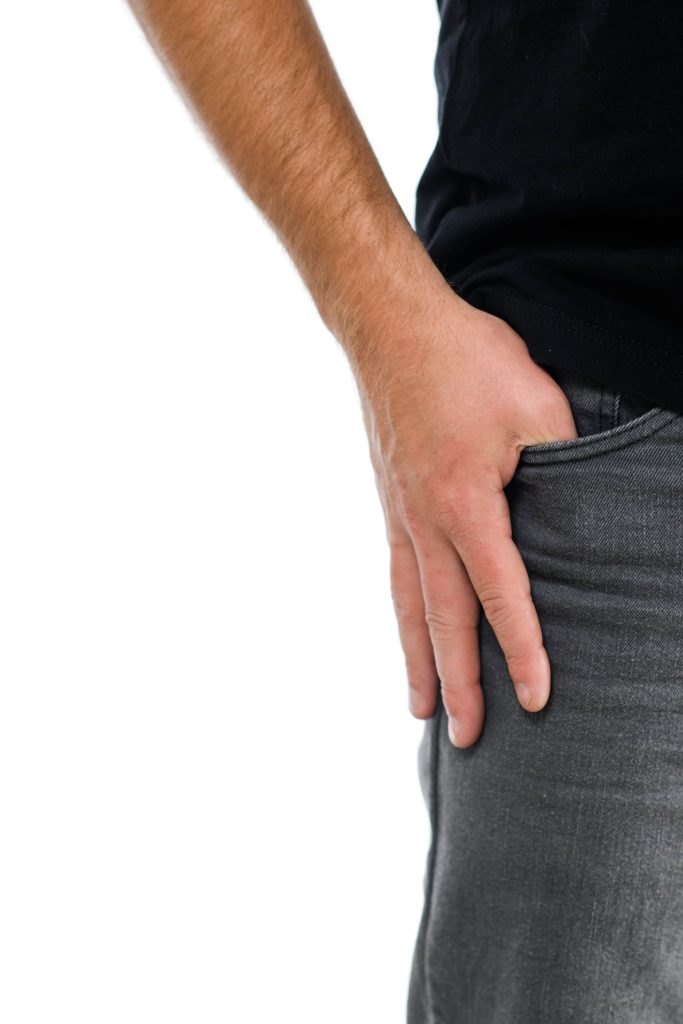
THUMBS HIDDEN
Description: The thumbs are subconscious abroad from view, such equally inside pockets or even wrapped around the other fingers.
What it Means: Usually a brandish of lower self-confidence, hiding thumbs usually signals concern, insecurity, or feelings of threat. High-status people have been observed to practice this sometimes when relaxing2 simply never when they're "on."
Dogs also perform a similar cue by hiding their ears during times of stress. They do this in order to streamline themselves in case they demand to make a mad dash… like if they manage to bite a hole through your $fifty doggy bed while you were out dining with your partner (oddly specific?).
How to Utilize it: Around shut friends and trusted others, information technology's totally fine to relax your hands in your pockets once in a while. But if y'all want to make the other person feel a bit insecure for any reason, sticking your easily deep in your pockets is a surefire way to do it!
Pop Quiz: Thumbs Out
In the picture below, the person has their hands in their pockets, just their thumbs are sticking out. What does this likely betoken?
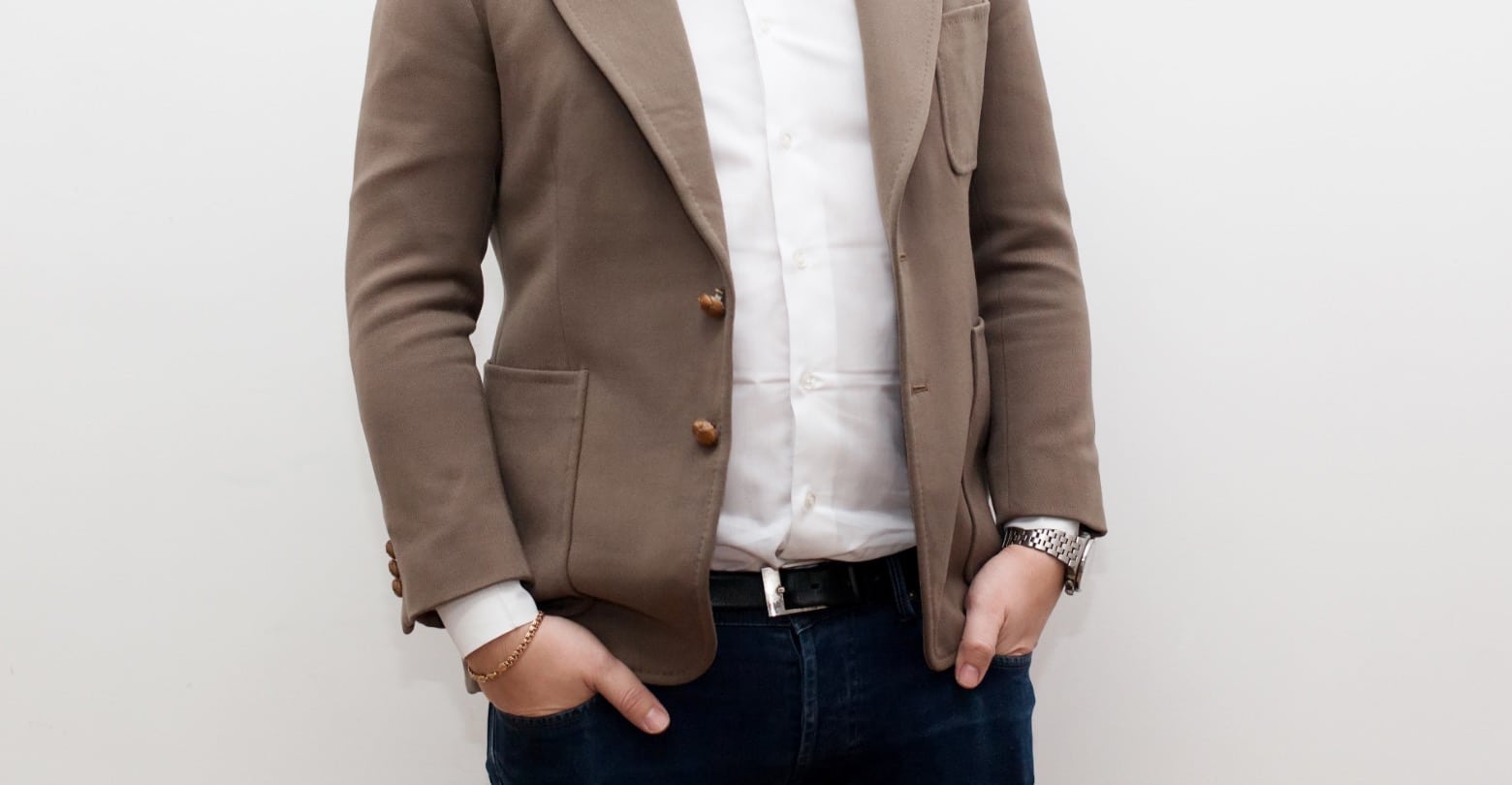
1. conviction
ii. nervousness or anxiety
iii. anticipation
iv. fear
Click to Reveal Answer
a) confidence. Even though the easily are inside the pockets, the big difference here is that the thumbs are sticking out. Thumbs are likewise the virtually powerful digits of your hand. When they are displayed confidently, this can oftentimes point confidence or power in a given situation.
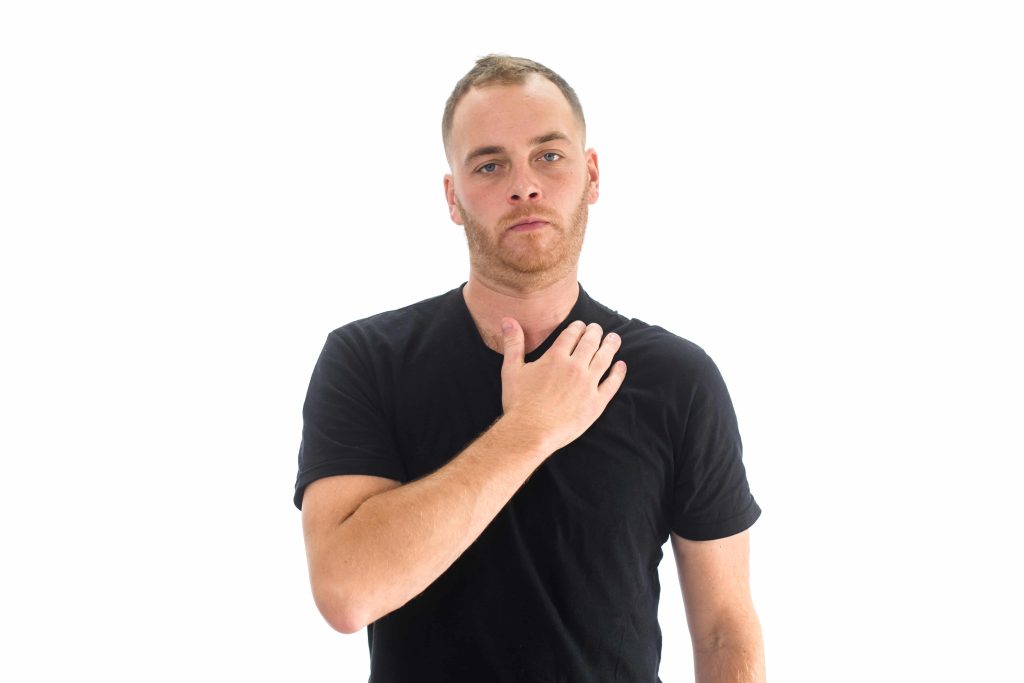
Neck RUBBING
Description: When people rub their necks, they'll ordinarily do it on the side or back of the neck. In more than extreme cases, you'll run into the suprasternal notch, or the part where your neck meets your clavicle, being touched (commonly more in women).
What it Means: People usually rub their neck when feeling insecure or stressed. For some people, this is their go-to method to relieve stress.
Those who habitually rub the cervix too have a tendency to be more negative or criticalane than others.
The Scientific discipline: When the nerve on the side of the neck called the vagus nerve is massaged, acetylcholine, a neurotransmitter that sends signals to the center, causes the heart rate to go down.
A Deadly Example:
Alarm:
This example contains graphic content.
In the formal interview of a Canadian-born Chinese-Vietnamese adult female named Jennifer Pan, she told detectives that her parents were murdered in her house by iii unknown thugs.
However, the interview officially turned into an interrogation when the detectives became suspicious. They noticed her story didn't line upwards, and the nonverbal cues she displayed weren't quite normal for her situation. It turns out that she actually staged the murder herself, and she was faking her story the unabridged time!
1 nonverbal cue she consistently displayed that signaled loftier stress was touching her suprasternal notch:

CROSSED ARMS
Description: Chances are, yous know this one. Practically everyone has crossed their arms at some point or some other.
What information technology Means: Most people who practice this are projecting acrimony, anxiety, or stress—information technology'south besides known equally the "cocky-hug"ii.
That's why people will usually cantankerous their artillery only in public and not when lonely. You'll see it often in public, such every bit in line at the DMV, in doctors' and dentists' waiting rooms, or with first-time air travelersone.
People who are feeling angry, hostile, or defensive may clench their fists and even combine this gesture with a tight-lipped smile or clenched teethi.
The Science: Research on over 1,500 volunteers was conducted past the Peases1 to find out exactly how the crossed-arms gesture made people feel. The volunteers, asked to attend a series of lectures, were divided into 2 groups:
- 1 group was asked to keep their legs uncrossed, arms unfolded, and take a relaxed sitting position.
- The second group did the aforementioned, except they were asked to cantankerous their artillery throughout the lectures.
The result? The second group learned and retained 38% less information than the group with unfolded artillery. They also gave more critical opinions of the lecturers and the lecturer.
How to Disarm information technology: If you run across someone with this gesture, yous can break their bulwark by giving them something to agree onto1—a pen, book, coffee, or brochure will work just fine. You tin can also ask them to lean forward to look at something to open up their arms up.
Case: Correct earlier a tug-of-state of war competition, most of the men on a tug-of-war team face off confronting 4 big Strongman competitors. Their crossed artillery are a expressionless giveaway that they're feeling tension from the upcoming struggle:
How Do You Cross
Hither's a elementary self-test you lot can do right now: cantankerous your arms. Now let me take a estimate… Did you cantankerous your left arm over your correct one?
Inquiry has constitute that seven out of 10 people cross their left arm over their right armone. This implies that this gesture might be genetic, with the less dominant left arm protecting the more useful right 1. If y'all endeavour crossing your artillery the other way, you might be surprised that it feels completely wrong!
And we all cross differently. Take a await at the chart beneath and see a scattering of the quirky ways we tend to cross our arms!
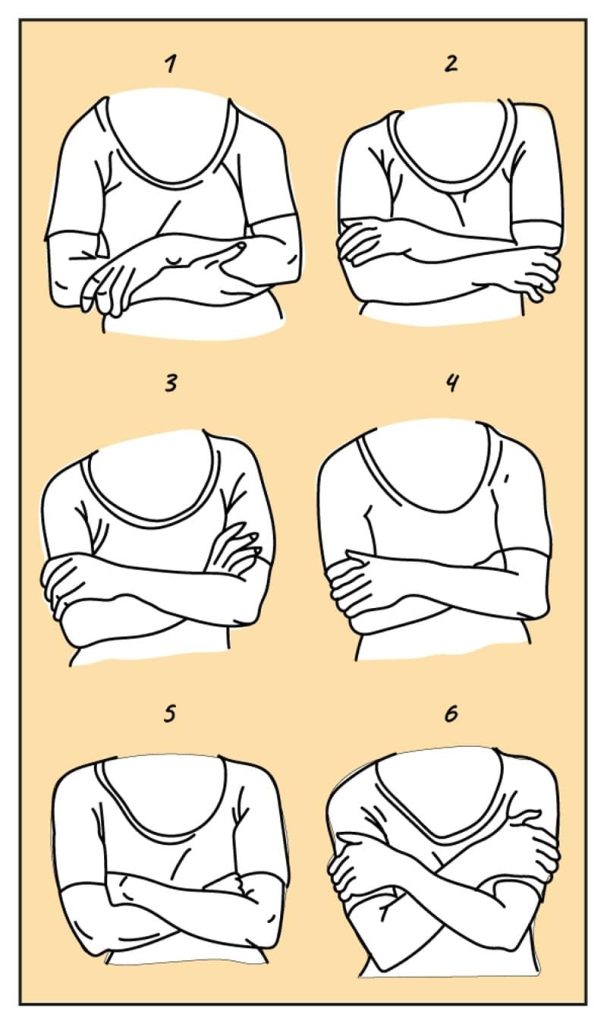
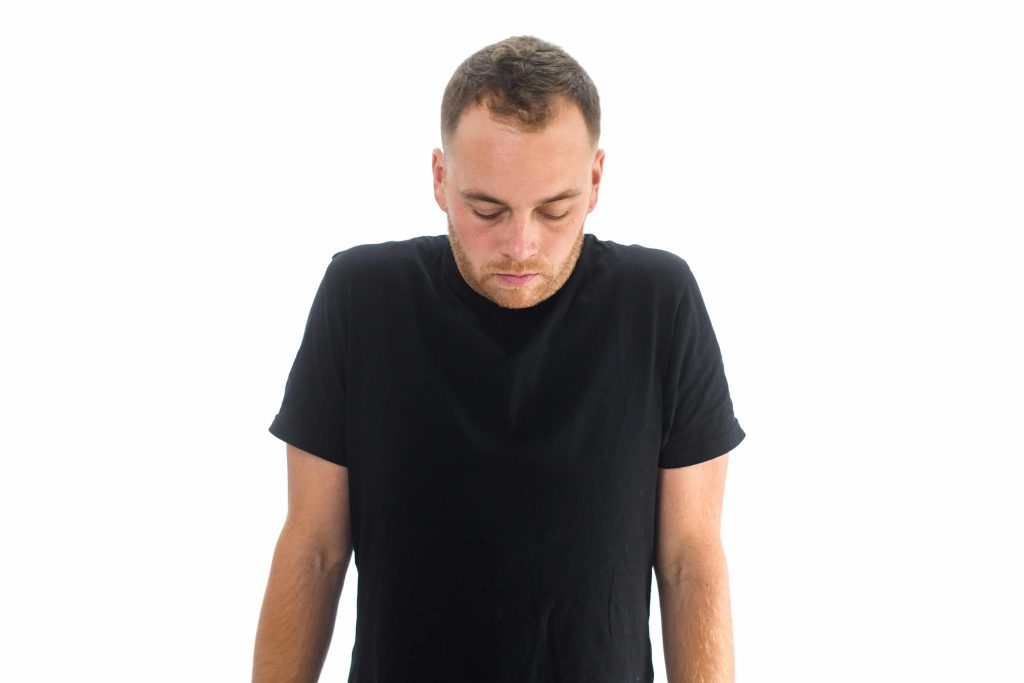
HUNCHED SHOULDERS
Description: How many times take you heard "shoulders back, head straight!"
Believe it or not, hunched shoulders are condign even more common nowadays, equally you lot'll encounter people slumped over, looking at their cellphones. Over time, this might even become the norm, as people develop chronically-hunched shoulders from staring at smartphones and hunched over laptops all day.
We may all literally terminate up like the Hunchback of Notre Dame:
All kidding aside, people who are super submissive in social situations, like those with clinical depression or self-proclaimed "social failures," may also walk with a permanent stoop, with shoulders rounded and their cervix hunched forward.
Significant: This is a naturally defensive posture. Forward shoulders may indicate that someone is trying to hide something or feeling vulnerable, since you are closing off your vulnerable neck and chest areas.
Yous'll besides rarely see this in mode shows and magazines, as it instantly drops your attraction value. This cue literally reminds me of a turtle withdrawing into its trounce:
Perhaps a better proper noun for this cue would be "turtling!"
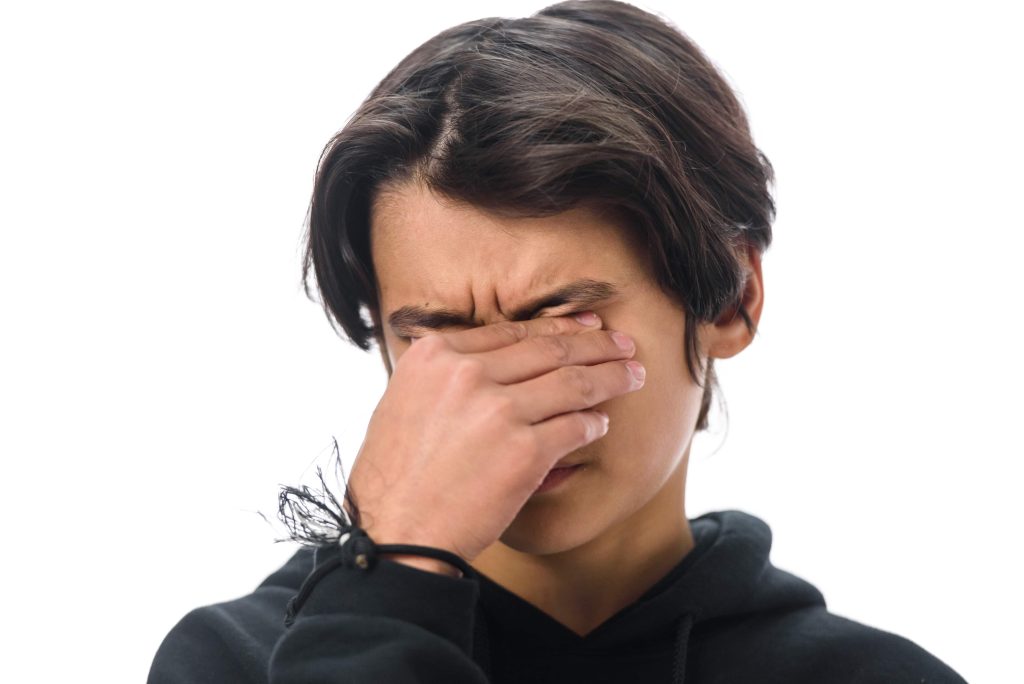
RUBBING EYES
Type: Pacifying
Description: People who rub their optics normally use their alphabetize finger, centre, or thumb to go far on that eyelid action. It can range either from a gentle, carve up-second bear on, to more obvious rubbing, to a very obvious, aroused, it'due south-raw blazon of face/eye rubbing:
What it Ways: Rubbing the eyelids really helps people at-home down, equally it acts like a "visual reset." Substantially, what y'all're saying when you rub your optics is: "Look, please go away. I wish everything in forepart of me just "vanished." You lot'll typically run across this gesture with loftier-stakes poker players every bit soon as they lose a paw, or during an argument between an angry and frustrated couple.
Of course, people naturally practice this to go those nasty eye boogies out, too, and then always take into account how tired someone is, earlier placing a negative label on them.
The Scientific discipline: Rubbing the eyelids stimulates a special nerve in the eyelids chosen the vagus nervus, which helps slow down heart and animate rates when information technology's massaged.
You lot can besides meet people practice this during conversations and interrogations when they are asked a hard or stress-inducing question, and if they desire to cut off middle contact to reduce their own stress or anxiety.
You may oftentimes meet this gesture more than in men than women, every bit women might be conditioned to avoid rubbing their optics, particularly if they wear center makeup.
How to Employ Information technology: Having a difficult solar day at work? Effort closing your optics in a safe space and gently rubbing your eyelids while taking a breath. I've institute just 30 seconds of this helps immensely and gives a sense of calm during a stressful solar day.

FIDGETING WITH OBJECTS
Description: Fidgeting involves playing with nearby objects, such every bit keys, coins, a pen, a ring, or a necklace.
What information technology Means: Fidgeting typically signals boredom. Bored of talking, bored of sitting down, and yeah—fifty-fifty bored of you lot (ouch!).
People who fidget may be subconsciously desiring sensory reassurance, similar to how babies hold onto their favorite toy. Other times, information technology may mean that people are anxious or curt on time—and in some cases, even disappointed (Robert Herzegovina definitely knows about that):
Yes, people even fidget with their fingers!
The Scientific discipline: Observations at railway stations and airports revealed that in that location are 10x as many displacement activities in flying situations. In other words, people fidget a lot when they're about to wing. These behaviors include:
- checking tickets
- taking out passports and putting them away
- rearranging mitt baggage
- making sure their wallet is in place
- dropping things and picking them upwardly
In contrast, only 8% of people boarding a train showed signs of fidgeting, compared to fourscore% of people at a bank check-in desk-bound of a jumbo-jet flying across the Atlantic4.
How to Use it: If y'all want an easy out to a chat, just start jangling your keys or coins in your pocket or hands. It might exist a bit rude, but if you've really gotta become, this is a great way to end a chat.
Historic Example: In 1969, when Elvis Presley made his first public stage advent in 9 years, he displayed signs of fidgeting. What exercise y'all retrieve he was feeling, judging by this picture?


TOUCHING EARS
Clarification: The ear is rubbed, pulled, scratched, touched, picked at… or rubbed vigorously.
What it Means: OK, you might take noticed a trend by now—touching yourself basically means anxiety. Not in all cases, but unless you've just got an itch that won't go away, repetitive self-impact in all forms is a way to ease tension throughout your body.
People generally scratch behind their ears, says Dutch biologist Nikolaas Tinbergen, as a way to ease tension during stressful situations. Such as when you lot've made a public speaking corrigendum in front of thousands of people.
Effectively, people who do this may exist trying to "block" information that they've just heard—whether it's a prodding question, or even if they've been accused.
Example: Y'all may be familiar with the American actress Carol Burnett, who was famous for tugging on her left ear. She did this at the end of each show to permit her grandmother know she was doing well and loved her. After her grandmother'southward passing, she continued tugging her ear equally a tradition and in memory of her.
See No Evil, Hear No Evil, Speak No Evil
Have y'all heard of the former Japanese maxim of the Three Wise Monkeys? You know, the picture of the three monkeys covering their eyes, ears, and mouth?
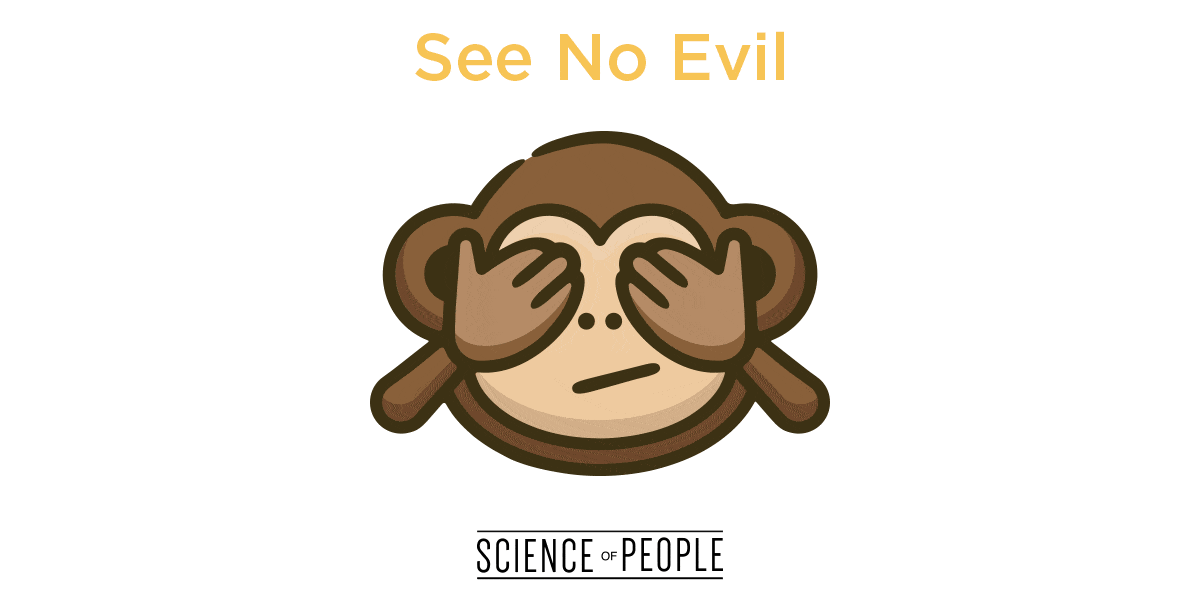
It turns out this pic is a GREAT example for explaining many blocking behaviors. Generally, touching the eyes, ears, or oral fissure are unconscious ways that people try to block out information… or forbid it from escaping—which is why yous'll oftentimes see these cues during intense interrogation sessions!
↑ Table of Contents ↑
What Are the xi Types of Trunk Language?
Besides open and closed, body language can exist further broken down into 11 different channels, including facial expressions, trunk proxemics, and ornaments.
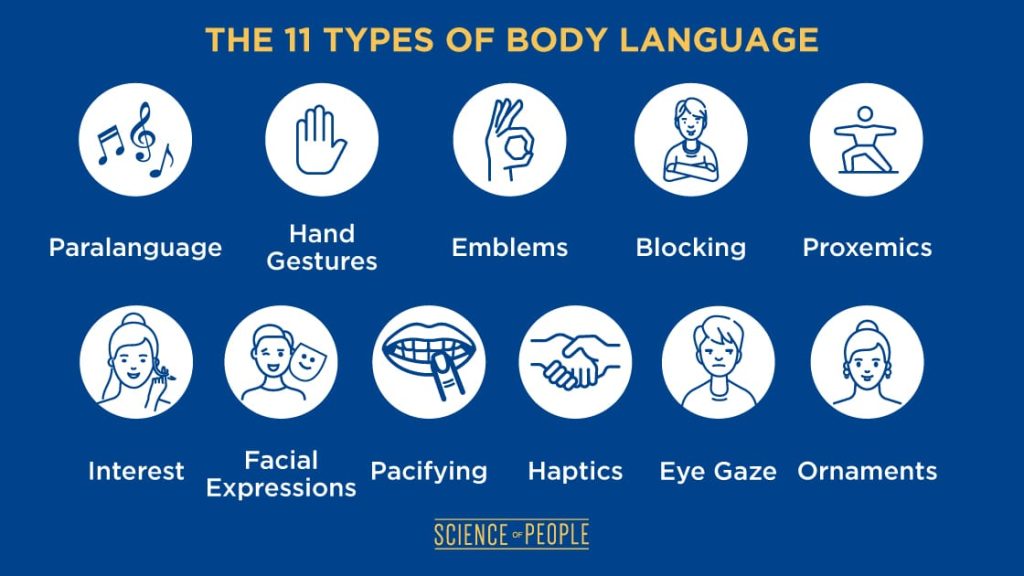
↑ Table of Contents ↑
Facial Expressions
Researcher Dr. Paul Ekman discovered seven universal microexpressions—or short facial gestures every man makes when they feel an intense emotion. We are very drawn to looking at and observing the face up to understand someone'southward hidden emotions.
↑ Table of Contents ↑
Body Proxemics
Proxemics is a term for how our body moves in infinite. Nosotros are constantly looking at how someone is moving—are they gesturing? Leaning? Moving toward or away from united states? Body movements tell us a lot about preferences and nervousness.
↑ Table of Contents ↑
Gestures
The most common gestures are hand gestures. Nosotros often use our easily to limited our emotions, tell a story, or comfort ourselves. My team fifty-fifty did an experiment on TED talks and found the most popular speakers also used the most hand gestures.
↑ Table of Contents ↑
Ornaments
Wearing apparel, jewelry, sunglasses, and hairstyles are all extensions of our trunk language. Not only do sure colors and styles ship signals to others, how we interact with our ornaments is likewise telling. Is someone a fidgeter with their lookout or ring?
↑ Table of Contents ↑
Interest
Interest cues can be signs of allure or general interest that usually don't involve touch. From obvious cues similar winking and smiling, to more subtle ones like a flick of the hair or displaying the wrist, knowing which cues to give and recognizing them is primal to building rapport.
↑ Table of Contents ↑
Heart Gaze
Eye movements and changes tell us a lot nigh others' intentions. During an interaction, we tin can frequently see changes such every bit longer eye gaze, sideways glances, and blocked eyes. These cues can signal emotions like attraction, skepticism, or stress.
↑ Tabular array of Contents ↑
Pacifying
Pacifying behaviors consist of a broad range of cocky-soothing behaviors that serve to calm united states of america down after experiencing something unpleasant. This can be seen with fidgeting, billowy anxiety, and arm rubbing. As a full general rule of pollex, any repetitive behavior is probable pacifying.
↑ Tabular array of Contents ↑
Haptics
Haptics refers to torso language cues that involve affect. These include handshakes, touching another'due south arm, hugs, a pat on the shoulder, and kissing. Since we interact with the world through touch, we can detect how others touch u.s. to get an insight on their preferences.
↑ Table of Contents ↑
Blocking
Blocking cues are performed to magically "vanish" the cause of people's stress or feet. Like the iii wise monkeys—"see no evil, hear no evil, speak no evil"—these cues consist of barriers like touching the rima oris or crossing the arms to block out the environment.
↑ Tabular array of Contents ↑
Paralanguage
Paralanguage is the nonverbal communications of your voice, such as pitch, tone, and cadence. Frequently, nosotros can hear how confident or anxious ane feels past simply listening to their voice. By learning paralanguage, we can even master our own voices and give power to our words.
↑ Table of Contents ↑
Emblems
Emblems, or symbolic cues, represent messages that are consciously understood by others, and are often used in place of words. There are over 800 emblems, from your "OK" sign and "thumbs upwardly," and they are heavily dependent on a person's culture and geographic location.
↑ Table of Contents ↑
Understanding & Interpreting torso language
Body language isn't merely about seeing a body language cue and
In the world of body language, at that place are 2 camps:
Absolutists believe that whenever a trunk language cue appears, it 100% has the interpreted meaning. For case, if a person crosses their arms, information technology means they are feeling blocked off in all cases.
Contextualists believe that torso language depends on the situation. If a person crosses their artillery, it could mean that they're cold, or information technology's simply more comfy for them.
The key to agreement body language is to exist a contextualist, not an absolutist. Learning most body language cues without knowing how to apply them may skew your opinions nearly others for the worse, rather than improving them for the meliorate.
↑ Table of Contents ↑
Body Language Mini FAQ
Here are some other questions I've been asked near body language, which I've compiled into a mini FAQ:
Is body language a science?
Aye! Body language cues and their consistency have been scientifically proven time and time again by researchers such as Paul Ekman, Joe Navarro, Barbara and Allan Pease, Desmond Morris, and Carol Kinsey Goman. However, information technology's important to note that anybody has their individual quirks that may be different from the norm.
Is trunk language universal?
No. While many cues are universal, such as the eyebrow wink and 7 facial microexpressions, many body language cues are specific to a civilisation or geographic location. For example, many Western cultures prefer a handshake every bit a greeting; however, some Spanish or Latin cultures may kiss, Thai culture oft employs the "wai" greeting, and the Japanese may prefer to bow.
What is a nonverbal cue?
A nonverbal cue is anything that is done nonverbally during an interaction, such as a hand gesture or bodily movement. Many trunk linguistic communication cues can be interpreted to reveal a person's intentions or feelings during a situation.
What practice yous do when a person's body language and words don't match?
When there is a mismatch betwixt a person's words and trunk language, it is generally preferred to rely on their body linguistic communication for an accurate estimation of their true feelings. Most people make a witting try to choose their words carefully; however, torso language is much harder to consciously control and therefore more reliable in most cases.
What is the deviation betwixt body language and nonverbal advice?
Nonverbal communication is the broad term used to describe all types of communication without using words. Body language is a category of nonverbal communication that focuses on all parts of the body, such as facial expressions and gestures.
Tin can body language be misread?
Admittedly! Many people, especially those who are new to reading torso language, will make the mistake of attempting to read body language but get it wrong. They may read a certain trunk language cue and forget to take into consideration the context or environment. They may besides read a cue but miss out on other, more of import cues that bespeak the opposite of their interpretation.
What body language indicates lying?
Common body language cues that betoken lying are touching the nose, increased centre contact, licking the lips, uncertain vocal tonality, and a frozen posture. In that location are many lying cues that may indicate deception. Even so, there is no single cue that definitively ways a person is lying.
How long does it take to become skilful at reading body linguistic communication?
It depends. Some people are naturally gifted at reading trunk language and tin pick up on it readily. For others, it may take months in order to go a basic grasp of body language. The amount of time spent observing cues, a person's perceptiveness, and the corporeality of training and enquiry one does all bear on a person's body-language-reading abilities.
I hope this commodity has been useful to you! To continue the guide, please click on the side by side article link below. And if you take whatsoever other questions about body language, please leave a comment below and so I tin potentially add it to the mini FAQ!
To your success,
Vanessa
Sources:
1 Pease, A. (2017). The definitive volume of torso language: How to read others' attitudes by their gestures. London: Orion. 2 Navarro, J., & Karlins, Thou. (2015). What every BODY is saying: An ex-FBI agent's guide to speed-reading people. New York, NY: Harper Collins. 3 Knapp, Grand. L., & Hall, J. A. (2014). Nonverbal advice in human interaction. Boston: Wadsworth Cengage Learning. 4 Morris, D. (2012). Peoplewatching: The Desmond Morris Guide to Body Language. London: Vintage Digital.
Side Note: As much as possible we tried to use academic inquiry or expert opinion for this primary body language guide. Occasionally, when we could not notice enquiry we include anecdotes that are helpful. As more than research comes out on nonverbal behavior we volition be sure to add it!
This article is part of our body language guide. Click here for more.
Source: https://www.scienceofpeople.com/body-language-examples/
Posted by: mcdonaldjaclut36.blogspot.com


0 Response to "How To Draw Fear Body Language"
Post a Comment